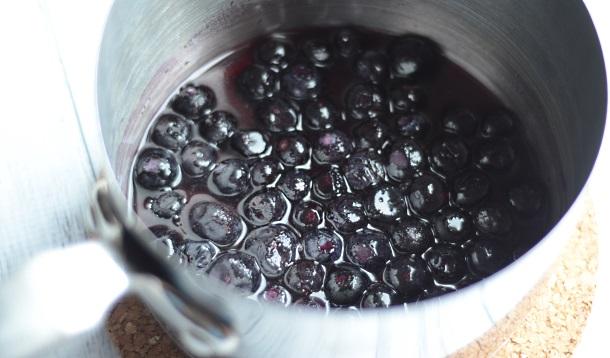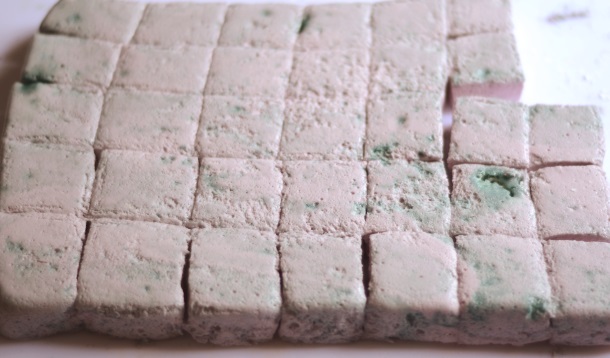
I was experimenting in the kitchen, hardcore, when disaster struck. As I was folding in egg whites into the candied gelatin mixture that would shortly become blueberry marshmallows - the last step before putting them in the pan - the beautiful purple began to turn... green? Flummoxed, I tasted it. Tasted fine. I tried stirring it up. No luck. So as I went looking on the internet for the answer, a Google book provided me a little tidbit I never knew or thought about before:
Blueberries have anthocyanins. Suddenly, everything became clear to me.
But maybe it's not clear to you yet. What, you might be asking, the Sam Hill is an anthocyanin? Anthocyanins are color-changing pigments that react to the acidity or alkalinity of substances. Indeed, back on my home blog about 18 months ago, I did some winter fun experiments with kidlet and red cabbage - another abundant source of the pigments. You chop up the cabbage, you boil it in water, the pigments make the tap water a pretty blue purpley color... and then you put other stuff in it. Lemon juice makes it a brilliant, almost-neon pink. Baking soda turns it green, and stronger substances (like bleach) can make the colors range from yellow to nearly colorless.
I don't actually get to cook with blueberries all that much, which is possibly why I've never noticed this before. Kidlet prefers his blueberries fresh. And in his mouth. And my eggs...
Well, apparently my eggs have seen better days. You see, when fresh, egg whites are nearly neutral in pH. But as they age, they become more alkaline, swinging from about 7 to sometimes over 9--roughly the same pH as washing soda, which, oddly enough, turns cabbage water a pretty shade of green.
So my marshmallows were technicolored, though the taste wasn't affected any. But this same process could affect pancakes, muffins, and other things where blueberry (or cabbage) pigment hits something that is a few steps removed on the pH scale.
If you have a problem with your foods turning color when they shouldn't be, a little acid might help--this is why you should add vinegar to cooking red cabbage. Sometimes the culprit is actually what you're cooking your food in. Iron, tin, and aluminum can react with anthocyanins too (you shouldn't be using aluminum or tin cookware anyway, so throw it out).
And of course, always make sure that your eggs are fresh.
Or at least, fresher than mine were.

![]() RELATED: This Blueberry Tart Recipe Will Become A Family Favourite
RELATED: This Blueberry Tart Recipe Will Become A Family Favourite